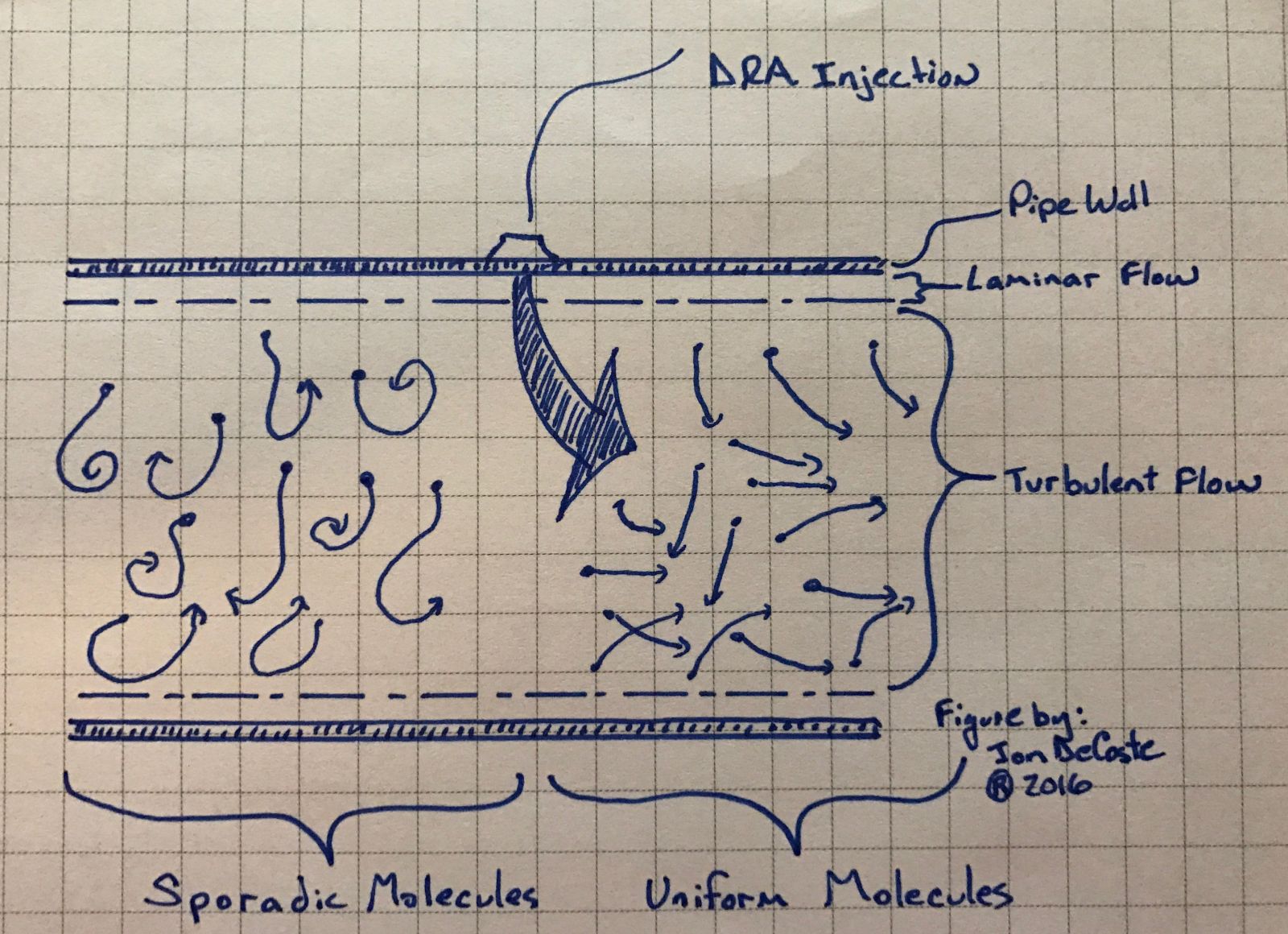News
News
- Is the zetag 4100 DK a kind of cationic or anionic polyacrylamide?
- what is application of polyacrylamide used for red mud in aluminum plant?
- How does amphoteric polyacrylamide works?
- whats is main applications of amphoteric polyacrylamide?
- what is main applications of nonionic flocculant?
- what is application of polyacrylamide?How is the product classified?what is applications ?
- What are the production processes of polyacrylamide? What are their own characteristics?
- what is PHPA polymer and what is the main applicaitons in oilfeild?
- what is the main application of amphoteric polyacrylamide?
- what is hydrolysis degree and molecular weight ?what is applications of polyacrylamide?
How does drag reducing agent (DRA)work?
To get an in-depth understanding of how DRA works we would need to go back and brush up on our fluid dynamics course material. However, I would like you to finish reading this article so we will leave that for another day. Fundamentally, DRA takes flowing molecules that are jumping around sporadically within the pipeline (turbulent flow) and helps them move in a more uniform manner down the line. This allows the pumps to more efficiently push the hydrocarbon, versus wasting energy fighting the sporadic molecules.

What is the true value of using DRA(drag reducing agent)?
DRA is a fascinating solution from a technical perspective, but the ultimate question, especially in today’s economy, is how does this make or save our company money? From my experience there are three ways DRA can be justified as a value add solution.
1) Throughput:
Firms that supply drag-reducing polymers state that flow increases in the range of 5-60% can be realized. This depends on system specifics such as available pumping capacity (is there available curve on the existing pumps to increase flow rate?), batching operations, booster stations, and lateral receipt configuration.
From my experience, a simple system with one commodity can definitely achieve a continuous 40% increase to flow. I have also achieved continuous flow increases of up to 30% on more complex systems with crude and condensate batching operation.
Increasing flow results in additional monthly throughput and thus increased revenue for a pipeline. It can also be a bridging solution between current system capacity and your future pump station upgrade capacity. An economic analysis may also suggest that DRA is a substitute to a system mechanical upgrade.
2) Energy Savings:
Maximizing throughput is not always a need for midstream companies. Perhaps a midstream company owns a pipeline in an area that doesn’t expect to see new volumes contracted. In this situation, DRA can provide an opportunity for reducing operating costs through pumping energy consumption. Pumps consume energy (electricity, fuel, or gas) in order to pump hydrocarbons down pipelines. DRA has the ability to reduce the line pressure of the pipeline, resulting in the pumps requiring less energy to transport the same amount of product.
Once again you can complete a simple economic analysis to determine the cost/benefit of such a scenario. Keep in mind contract terms for pump energy supply, transport contracts, and DRA supply contracts.
3) Operational flexibility:
There are two main areas I consider when evaluating DRA as a solution for operational flexibility. The first is along the lines of the Redbull effect; yes I am talking about the energy drink. There are occasions when pipelines would like to have the opportunity to turbo charge their flow rates for a finite period of time. An example would be when starting up a pipeline after a lengthy outage where facility tanks have become full of product. DRA can provide an economic solution to empty storage quickly and make up the lost pumping time with the goal of maintaining the pipeline’s typical capacity. This is a great solution as upstream customers will be less likely to experience a take-away reduction due to the outage.
The second area of operational flexibility is regarding pressure restrictions of pipelines, typically due to integrity events. There are times midstream companies choose to reduce the MOP (maximum operating pressure) of a pipeline as a precautionary effort during mitigation activities. Pressure restrictions on a pipeline may result in decreased flow rates if the pipeline was running at design capacity. Injecting DRA would result in a reduction of pipeline pressure, allowing an increase of flow rate to pre-pressure restriction levels.


